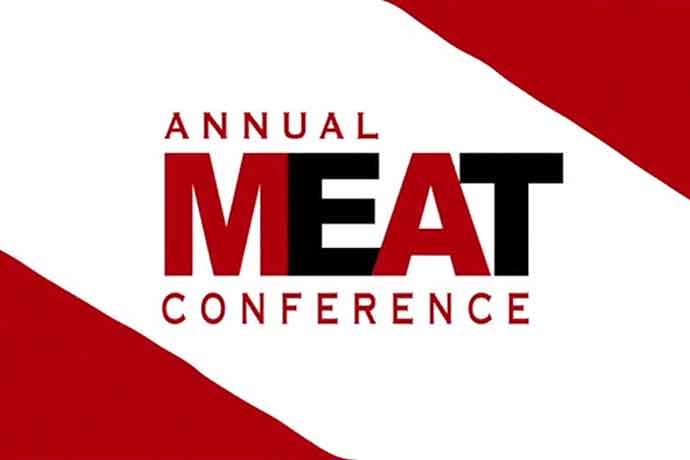NASHVILLE, TENN. – Meat retailers and industry professionals gathered in Nashville March 2-4 to share ideas and insights about meat retailing and the changing industry. Eric Mittenthal, vice president of sustainability for the North American Meat Institute (NAMI), took the stage to dispel some common myths regarding animal agriculture and the meat industry.
Mittenthal leads NAMI’s sustainability initiatives, one of which addresses the misconceptions relating to the meat industry and the environment.
In an effort to provide easy-to-understand information to consumers and industry, NAMI and the American Meat Science Association (AMSA) developed its “Meat Myth Crushers” video series (www.meatmythcrusher.com). The videos cover a wide variety of topics, including the environment, animal welfare, antibiotics, food safety, meat processing, nutrition and more.
Three common environmental myths regarding the meat industry are:
- Of all greenhouse gas emissions, there are misrepresentations about how much come from animal agriculture. Some sources say 18% or even 51% come from animal agriculture.
- It takes more than 2,400 gallons of water to produce 1 lb of beef.
- Land used for grazing animals can easily be swapped to grow crops.
 Mittenthal said that when it comes to statistics regarding greenhouse gas emissions and animal agriculture, the numbers have been misrepresented for years. In 2017, the Environmental Protection Agency (EPA) reported that only 9% of the total greenhouse gas emissions in the United States come from the agriculture industry as a whole, only 4% of which come from animal agriculture. The rest of the emissions come from transportation (29%), electricity (28%), industry (22%) and commercial and residential (12%).
Mittenthal said that when it comes to statistics regarding greenhouse gas emissions and animal agriculture, the numbers have been misrepresented for years. In 2017, the Environmental Protection Agency (EPA) reported that only 9% of the total greenhouse gas emissions in the United States come from the agriculture industry as a whole, only 4% of which come from animal agriculture. The rest of the emissions come from transportation (29%), electricity (28%), industry (22%) and commercial and residential (12%).
Another common myth regarding meat production is how much water it takes to produce beef. The common myth is it takes more than 2,400 gallons of water to produce 1 lb of beef. Mittenthal explained that it actually takes around 308 gallons of water to produce 1 lb of beef. While that still seems like a high number to some, Myth Crushers’ research concludes it takes 713 gallons of water to manufacture one cotton t-shirt and 39,090 gallons to manufacture a car.
To counter the argument that it would be better for the environment if all people stopped eating meat and all adopted vegan diets, Mittenthal explained the problems that would result.
In the United States, around half of the land is used for agriculture (70% of which is used to raise livestock while 30% is used to grow crops). According to the US Department of Agriculture, only 1.6% of the current livestock land in the United States could be converted to crop land.
“The system is complicated, you can’t just take one piece and drastically change it without impacting another piece,” he said. “Animal agriculture benefits greatly from plant agriculture and vice versa. It’s a symbiotic system.
“But, it’s not to say there’s no room for improvement.”


